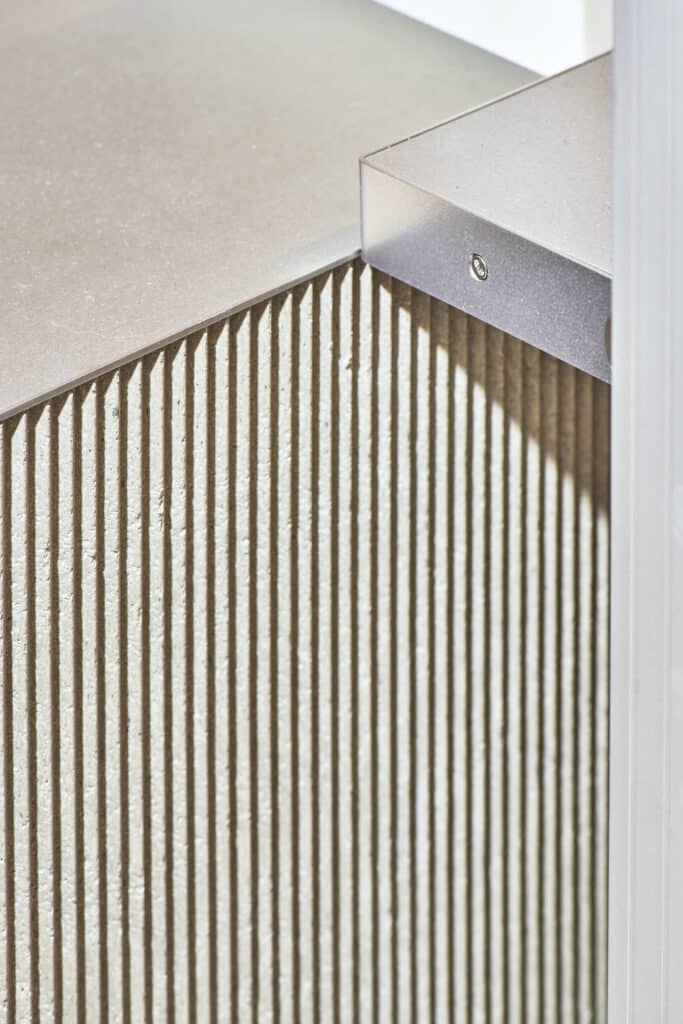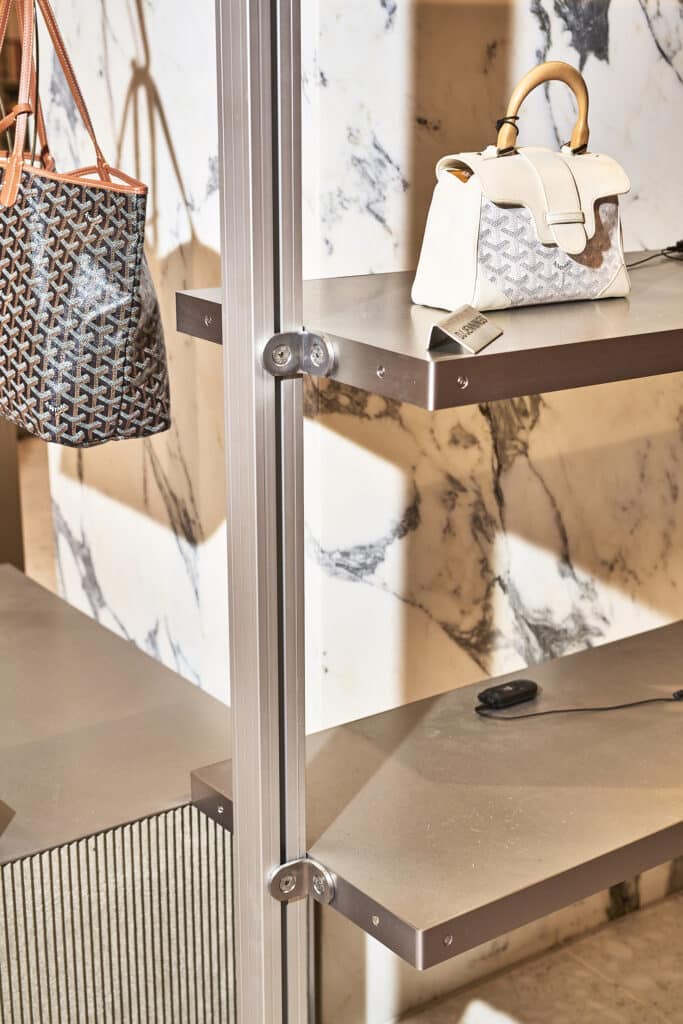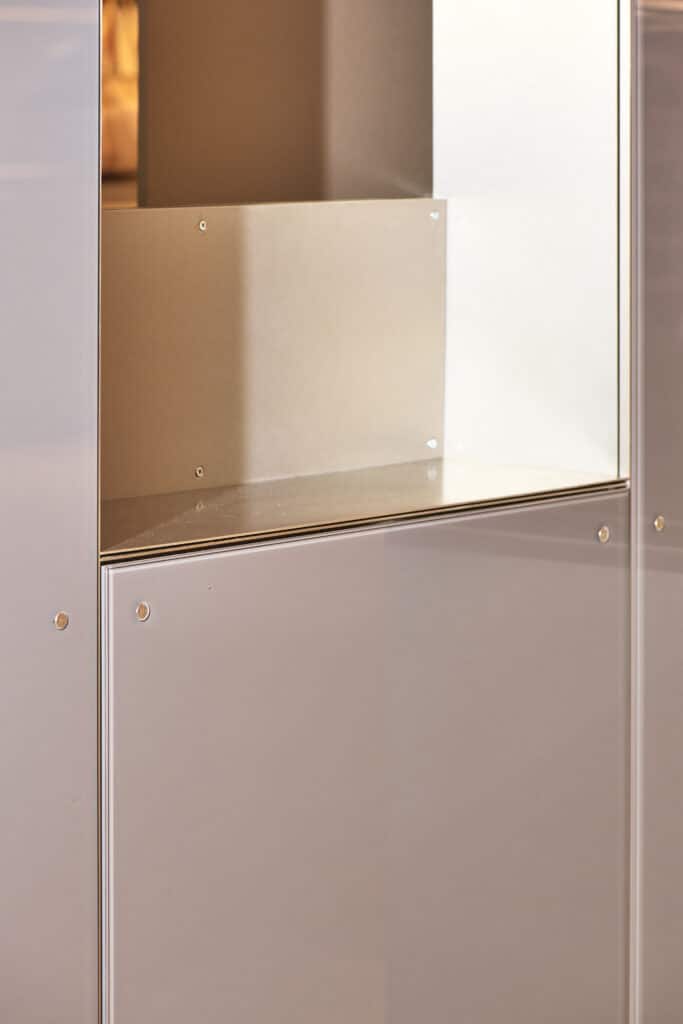Design for Disassembly is a circular design strategy based on maximising profit, reducing carbon and reducing waste.
It requires a detailed understanding of materials, fixing methods and manufacturing to fabricate and decouple materials over the course of a products life.
It’s also about creating products where materials are used in such a way that they remain assets for the future rather than waste at the end of a products life. As well as creating spaces that are easy to repair, and cost and time efficient to refurbish. Designed to remain relevant, built to last.


Where sustainability meets the bottom line
D4D in the hospitality and retail space is about redefining luxury. Creating carefully considered bespoke designs that are unique to the individual or business and make sense commercially and environmentally. Good design is rightly judged on critical factors such as aesthetics, as well as quality, functionality and cost. But we often neglect another important factor: How something makes us feel. This is the space between aesthetics and function that makes something not just good, but exceptional. The way something makes you feel when it works well, the sense of grandeur and theatre when you enter a hotel lobby, the emotional tie to a space, the loyalty you feel towards a brand. Design that takes a holistic approach, inspired by history, culture, context, humanity and nature. Weaving them seamlessly together.
The 4 R’s – Repair, Refurbish, Reuse & Recycle
Design for Disassembly implies we are only thinking about how something goes together so it can come apart and be recycled. But it is fundamentally about creating designs that support and aid businesses to flourish and remain profitable whilst in operation.
Developing designs with a detailed understanding of how an interior or installation can be repaired, refurbished, reused and eventually recycled. There is a tendency, particularly in interior design, to focus on the day a project opens to the public, when the designer’s role typically comes to an end. But the opening of a venue following a refurbishment is not the end, it is the beginning. The moment all of the design choices play out in public. During the design phase of a project, it is crucial to look far beyond that moment a project hands over and starts trading.


There are a range of important questions that are often neglected but are essential for hospitality and retail businesses to thrive, for example: Can fixtures and fittings be repaired quickly and easily? Is the space simple to refurbish in the future? Can fixtures be moved and reused elsewhere, or elevated for use in a new project? Will the materials be burned or buried when the client no longer needs them? If we can successfully answer these questions, then we drastically cut waste and carbon, but we can also save clients significant amounts of money by reducing the need for reinvestment, or through operational efficiencies.
Repair
Understanding how interiors are protected and maintained can drastically reduce operational costs. Room closures for repairs and maintenance have a huge impact on a hotel’s profitability, so when things go wrong, the rooms must be brought back online as soon as possible. Through the D4D process we consider how products and spaces come part, accelerating repair times so hotels don’t lose revenue. In 2017 we finished a hotel in West London. Within a week a guest had opened a bottle of beer on the edge of an oak shelf, gouging the face. The shelves were designed with 20mm solid lipping’s front and back so the shelf could be flipped in the short term and easily repaired in the long. If repairs can be made during change-over, then there is no lost revenue.
Reuse
When starting a new refurbishment, it is important to consider using existing products or furniture, rather than new, because the financial and environmental benefits are considerable. For example, a typical task chair has an estimated average carbon footprint of 72 (kgCO2e), compared with 21 (kgCO2e) for a refurbished, a 71% reduction. Additionally, there is typically a 50% reduction in cost between new and a refurbished alternative of high quality.
If you are starting from scratch, then you may consider products from pre-loved/second hand sources, but if you have a property that you know you’ll be reinvesting in over time, then you have to consider what sort of furniture you want to ‘inherit’ for your future refurbishment because it is totally in your control. For example, if you own a purpose-built Victorian Hotel, then late 19th century furniture will always be appropriate/relevant. The choices you make today determine in you ‘inherit’ an asset or a burden, and that comes with a cost.
Through D4D, future reuse is designed into the process making it cheaper and easier to maximise the benefits. But if you don’t consider this from the start you are forcing your business into cycles of reinvestment that are potentially unnecessary and excessively costly.
Refurbishment
Designing for a future refurbishment is a progression of the same principles that support repairing and reuse but on a larger scale. It’s about creating spaces that can come apart so they can be refinished, reupholstered, and re-clad, to introduce new technologies, refresh the appearance, and re-energise the customer and client base.
At its most extreme, entire guest rooms can be designed to be deconstructed, factory finished off site and reinstalled as good as new, saving valuable materials, carbon and cost. In a retail setting, this means fixtures and plinths that can come apart to be re-clad and adapted to meet the latest needs of the retailer whilst maintaining a luxury appearance.
When designing for refurbishment it raises questions beyond simple material decisions. For example, do you need to build electrics into joinery or furniture? Does this complicate the installation, hinder the speed of repairs and impact the de-install? Do I glue certain materials together? While it might create a quick strong fix for the original purpose, it makes is impossible for the surfaces to come apart in the future. How do I design access for maintenance, repairs and upgrades.
By failing to successfully answer these types of questions, businesses inadvertently build obsolescence into furniture and interiors, making them single use and throw away. D4D is a backstop to prevent these situations arising.
Recycle
Nothing lasts for ever and neither should it. Obsolescence in terms of fashion cycles or terminal product failure are clearly problematic as they encourage the consumption and discarding of materials and products even when their utility remains unimpaired. But obsolescence is a fundamental part of a regenerative system and planetary evolution. It is not good or bad; it just is. If we avoid change and stick with what we have things would not improve, and innovation would be stifled. However, the problem is that in most cases, we don’t design for this inevitable outcome, which is irresponsible design. At the end of a product life cycle, design of disassembly enables interior fixtures and fittings to be deconstructed, and the component parts, reused, recycled or discarded in waste streams.
These are the foundational principles of Design for Disassembly.

